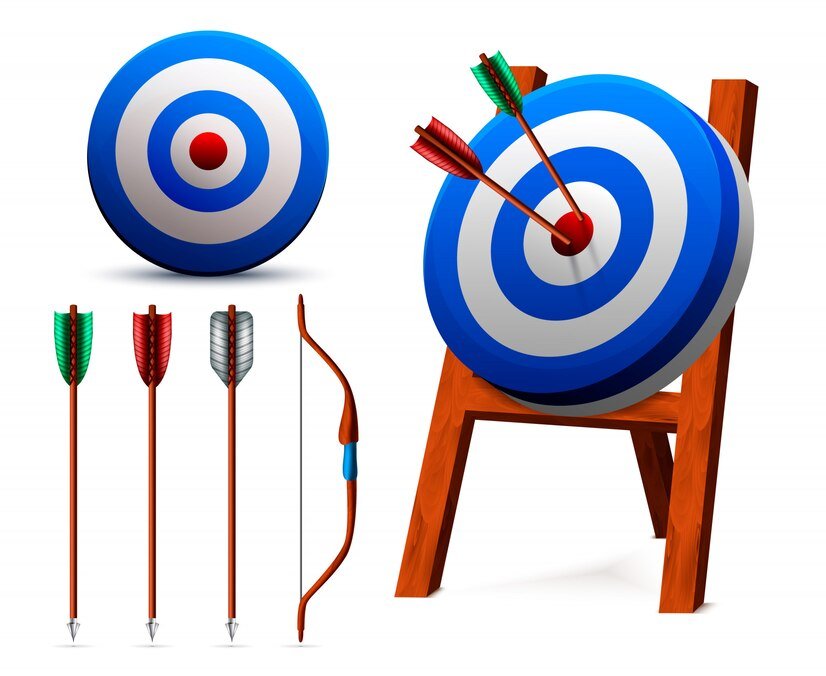Introduction
Bow targets are an essential tool for archers, whether you’re a seasoned professional or just starting out. They come in various forms, each designed to enhance your accuracy, consistency, and overall skill in archery. In this comprehensive guide, we’ll explore everything you need to know about bow targets, including the different types available, how to choose the right one for your needs, and maintenance tips to ensure longevity.
What Are Bow Targets?
Bow targets are specially designed surfaces used to practice archery. They absorb the impact of arrows and provide a visual indicator of where your arrows land. Bow targets are crucial for improving your aim, strength, and technique. They come in various shapes, sizes, and materials, catering to different archery styles and skill levels.
Types of Bow Targets
1. Bag Targets
Bag targets are one of the most popular choices among archers. They are filled with a dense material that stops arrows effectively and is relatively easy on the arrows’ tips. Bag targets are ideal for beginners due to their affordability and ease of use.
Benefits:
- Portable and lightweight
- Easy to replace the outer layer if damaged
- Suitable for both field and backyard practice
2. Block Targets
Block targets consist of several layers of foam that work together to stop arrows. They are known for their durability and are designed to handle high-impact shots. Block targets are often used by more experienced archers who need a target that can withstand frequent practice.
Benefits:
- High durability
- Excellent arrow stopping power
- Can be used for broadheads and field tips
3. 3D Targets
3D targets are modeled to look like real animals or creatures, making them ideal for bowhunters. They offer a more realistic practice experience, allowing archers to simulate hunting scenarios.
Benefits:
- Realistic practice experience
- Helps in developing hunting skills
- Can be used for both practice and competition
4. Traditional Targets
Traditional targets, often used in Olympic archery, consist of a circular target face with concentric rings. These targets are typically used in formal competitions and are designed to test precision and accuracy.
Benefits:
- Standardized scoring system
- Ideal for competitive archers
- Provides clear visual feedback
5. Foam Targets
Foam targets are made from high-density foam that absorbs the impact of arrows efficiently. They are known for their longevity and are suitable for various types of archery practice.
Benefits:
- Durable and long-lasting
- Suitable for both field tips and broadheads
- Easy to transport and set up
How to Choose the Right Bow Target
Selecting the right bow target depends on several factors, including your skill level, archery style, and practice goals. Here are some tips to help you make an informed choice:
1. Determine Your Archery Type
Consider whether you practice target archery, field archery, or bowhunting. Different targets cater to specific needs, so choose one that aligns with your primary archery activity.
2. Evaluate Material Durability
Think about how often you practice and the type of arrows you use. Targets made from high-density foam or other durable materials are ideal for frequent use.
3. Size and Portability
If you plan to practice in different locations, consider a target that is lightweight and easy to transport. Conversely, for a fixed setup, size and weight may be less of a concern.
4. Budget Considerations
Bow targets come in a range of prices. Determine your budget and find a target that offers the best balance of quality and cost.
Maintenance Tips for Bow Targets
To ensure your bow target lasts as long as possible, follow these maintenance tips:
1. Regular Inspection
Check your target regularly for signs of wear and tear. Look for any damage that might affect its performance, such as tears or holes.
2. Proper Storage
When not in use, store your target in a dry, cool place. Avoid exposure to extreme weather conditions to prevent material degradation.
3. Cleaning
Depending on the target material, you may need to clean it occasionally. Follow the manufacturer’s instructions for cleaning and maintenance to avoid damage.
4. Replacement
For targets that are worn out or damaged beyond repair, timely replacement is essential to maintain practice quality.
FAQs About Bow Targets
1. What is the best type of bow target for beginners?
For beginners, bag targets are often the best choice due to their affordability, ease of use, and effective arrow stopping power.
2. How often should I replace my bow target?
The frequency of replacement depends on the target’s material and how often you use it. Regular inspection will help determine when it’s time for a replacement.
3. Can I use broadheads on all types of bow targets?
Not all targets are designed for broadheads. Block targets and certain foam targets are suitable for broadheads, while bag targets are typically better suited for field tips.
4. How do I properly store my bow target?
Store your bow target in a dry, cool location away from direct sunlight and extreme weather conditions to prolong its life.
5. What factors should I consider when choosing a bow target?
Consider the type of archery you practice, the target material’s durability, size and portability, and your budget when choosing a bow target.
Conclusion
Bow targets are a fundamental aspect of archery practice, providing essential feedback and helping archers improve their skills. Whether you opt for a bag target, block target, 3D target, traditional target, or foam target, understanding their features and benefits will help you make an informed decision. Regular maintenance and proper care will ensure that your bow target remains effective and durable over time. With the right target and practice, you’ll be well on your way to achieving your archery goals.
You can see latest updates on: Allen wrench



